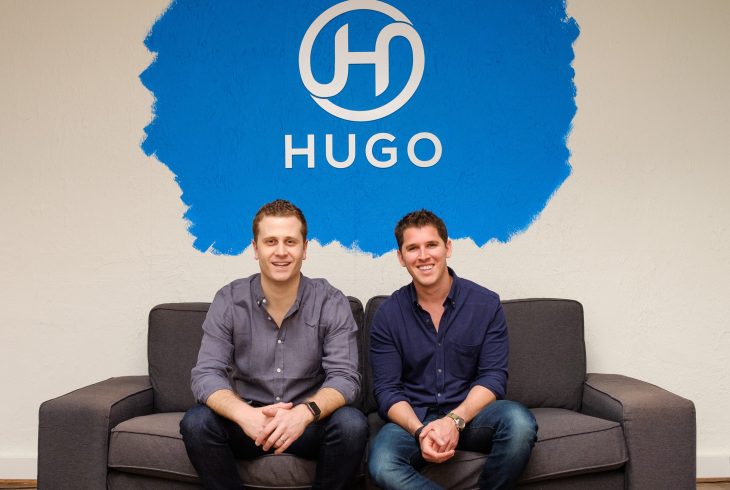
Customer Success is more than just the customer's experience.
The product and engineering teams are also responsible for creating a positive, productive customer experience.
In Vitally’s latest Scale or Fail webinar, our panelists discuss how Customer Success teams play a pivotal role in enabling Product-Led growth (PLG). How can companies ensure that their products are helping customers achieve their business goals? What are the best practices for engaging and retaining tech-touch customers? How do you build proactive outreach strategies to engage users before downloading or purchasing your product? And how do you enable Customer Success with scalable playbooks? If these are the questions you are asking yourself, this webinar (and webinar recap blog) is for you!
This blog will recap the key takeaways from episode 4 and share our Customer Success leaders and panelists from leading PLG companies — Hotjar, Productboard, and Mixpanel.
Question #1: What user segmentation methods do you use to support your product?
Ryan Seams, Senior Director, Customer Success, dives into the meat of this webinar, talking about segmentation methods at Mixpanel. Right off the bat, Ryan states how critical it is to distinguish between user segmentation and account-level segmentation to really accelerate PLG within your organization. “When we do account level segmentation, that's the free plan, the online plan, enterprise contract, etc. When we're thinking about the user, it's how do we actually think about how a user is going through some of these key flows…”
Ryan adds that another unique customer journey at Mixpanel is their extra focus on the first user of their product, getting them to integrate their historical and live data into the platform. “Then once we have that data, it's all about how do you get more users into the product, share those insights, and really bring your team in to make analytics a collaborative team sport at that point.”
William Wickey, Head of Growth at Vitally, chimes in on this question with marketing’s perspective on the similarity of user segmentation across different departments and how it can ensure separate departments are aiming for the same goal(s). William notes, “that the segmentation we use on the CS side of things, mirrors pretty closely on how we build content and campaigns on the marketing side. And that's one way, in a practical sense, to see whether or not we are aligned across departments and make sure we're communicating the same message to the same audience.”
Question #2: Recommendations for expectation setting when it comes to tech-touch customers? How do you ensure all customers feel equally supported at scale?
The biggest goal for any company is to scale operations effectively, so knowing how to give that customized support and attention to customers as you grow is a huge hurdle to clear. Coleen Bachi, Director of Customer Success at Hotjar, describes their build-up to a unified customer experience and journey to enable their customers to excel in the platform. This planning started with defining their north star metric: Getting customers to use the product. With that metric defined, the company can then build out customer experience teams under functions that enable all customers.
Coinciding with their goal of getting customers to use the product, Coleen provides context on a greater goal for supporting customers at scale while still driving product usage. As the number of customers increases, “self-served customers [are the ones who will] get the most value and get success really quickly. So that boils down to us having a really strong customer education program. That boils down to us having a product squad that's dedicated to the entire onboarding experience, as well as the acquisition experience, which is obviously before that.”
Coleen ends with a bang sharing her final thoughts on question #2: “Ultimately, having all these different teams focused on different areas, but still connected on driving usage, allows us to make a really clear journey for customers based on where they are in their journey using Hotjar and how much they're spending.”
Question #3: How do you weigh maximizing Customer Experience with increased automation for tech-touch customers?
For this question, William inputs his opinion on striking the balance between automation and customer experience and weighing the considerations of each to see how they interact with tech-touch and high-touch models. “With high-touch, you're starting from a place where most things involve a human touch. And then you're working in automation to increase efficiency and scale. With tech touch, you're starting from a place where more is automated, or everything is automated, and you're injecting human touches, to improve customer experience, increase time to value, and increase NRR.”
William also serves webinar attendees with a hot take on how to create successful high-touch and tech-touch models in your CS organization. “You want high-touch teams serving more accounts per CSM as you're injecting automation. You want to increase that time-to-value for tech-touch teams and prevent more accounts from falling through the cracks, as you tactically add in those human touches.”
Question #4: For your product(s), what is the most important factor or ”aha” moment in a new account succeeding with product adoption?
John Henwood, VP of Customer Success at Productboard, relays Productboard’s important “aha” moment. They first start with their product management teams [who collect] feedback across the organization and their customers. With that feedback, teams then “make sense of it, and then connect that to [their] prioritization of what [they] want to build next on [their] roadmap. And so for us, though, that kind of ‘aha’ moment is when the PM is able to take a piece of feedback and connect it to a feature idea that they want to work on.”
Everything may not go as planned, but practice makes perfect, according to John. He describes the hard truth that some CS teams have to face when there is misalignment around a goal. “If you realize your ‘aha’ moment is actually misaligned to some core business value propositions, something's amiss there. You have to go back and rethink some things, like, what is the core value actually delivered to customers? Is it what we think it is?”
On another note, Coleen from Hotjar describes how for their “key ‘aha’ moments, they focus on [if the customer] view[s] something from their data collection through [the] product that's meaningful to them.” But now you may be asking, how does the Customer Success team at Hotjar know what data is most meaningful to that particular customer? Based on her experience, Coleen says it’s when that customer “performs an action on it, maybe highlighting it or sharing it with somebody else in the organization. If it's worthy of sharing, it's probably meaningful to you [which is] how we derive that assumption.”
Question #5: What tools in your tech stack are essential for being proactive in your outreach to customers/supporting PLG from a CS perspective in general?
Serving some awesome insight on Mixpanel’s tech stack for proactive outreach and how CS supports PLG, Ryan feeds webinar viewers with some advice that will help CS teams devour the PLG game with clean, accurate customer data.
Ryan describes how “trustworthy data is the big key enabler to actually having a PLG strategy that works. Ultimately, if the data that you have around your users in your accounts is messy, hard to understand, etc., any automation that you're going to do is going to be wildly ineffective as it is going to target the wrong people with the wrong message at the wrong time.”
And he wasn’t done with just that; Ryan pinpoints how “data is the lifeblood of a PLG organization in many ways.” For Mixpanel, they centralize all of their data from all of the different tools utilized in their tech stack in a data warehouse so they could have a single source of truth. Centralizing all of their data created a unified view of their customer base, and, as Ryan adds, “because we centralize in the data warehouse, we then take all that data and pipe it back out to all those systems as well, so that our Support team in Zendesk, our Sales team in Salesforce, our Customer Success team Vitally, we're all looking at the same data set and understanding our users and accounts in the same way.”
As you can probably tell, Ryan is super passionate about data and how customer data can transform your organization. So we wanted to pass along a recommended resource from Ryan if you are interested in learning more about how Mixpanel approaches PLG with their current tech stack, how they set up their data, and extra detail on how that data flows.
Bonus Question: How do you organize unformatted customer feedback into meaningful and actionable data for the product?
There was some juicy input on this question that came in during the live Q&A that was too good not to share. John added his advice on distinguishing good feedback from bad feedback based on his many years of experience working with product teams, and during his tenure at Productboard.
John acknowledges that a “product team's job is really challenging. They're getting feedback from customer success, customers, from sales, execs, basically, from the top down.” Based on his experience, John offers some prominent questions and potential solutions for generating good feedback and customer data that can generate data-driven actions and insight.
“How can you make sure that you give high-quality feedback? How can you train your own organization, and your CS teams, on what good feedback looks like? [Think about] can we be problem-focused, rather than solution focused? [Some solutions could be a] training on active listening. [Another could be] providing templates to your CS team about what good feedback looks like versus bad.”
Episode 4 of Vitally’s Scale or Fail webinar series, “Defining Customer Success' Role in Product-Led Growth” was packed with PLG goodness that deserves to be heard by any Customer Success professional. Customer Success teams have a unique opportunity to help companies create products that support their customer’s goals and priorities, rather than just solve their problems. Though this blog highlighted the key takeaways from this webinar, we didn’t include all of it (or you would be in for a very, very long read). So take our word for it and check out the webinar on-demand here!










